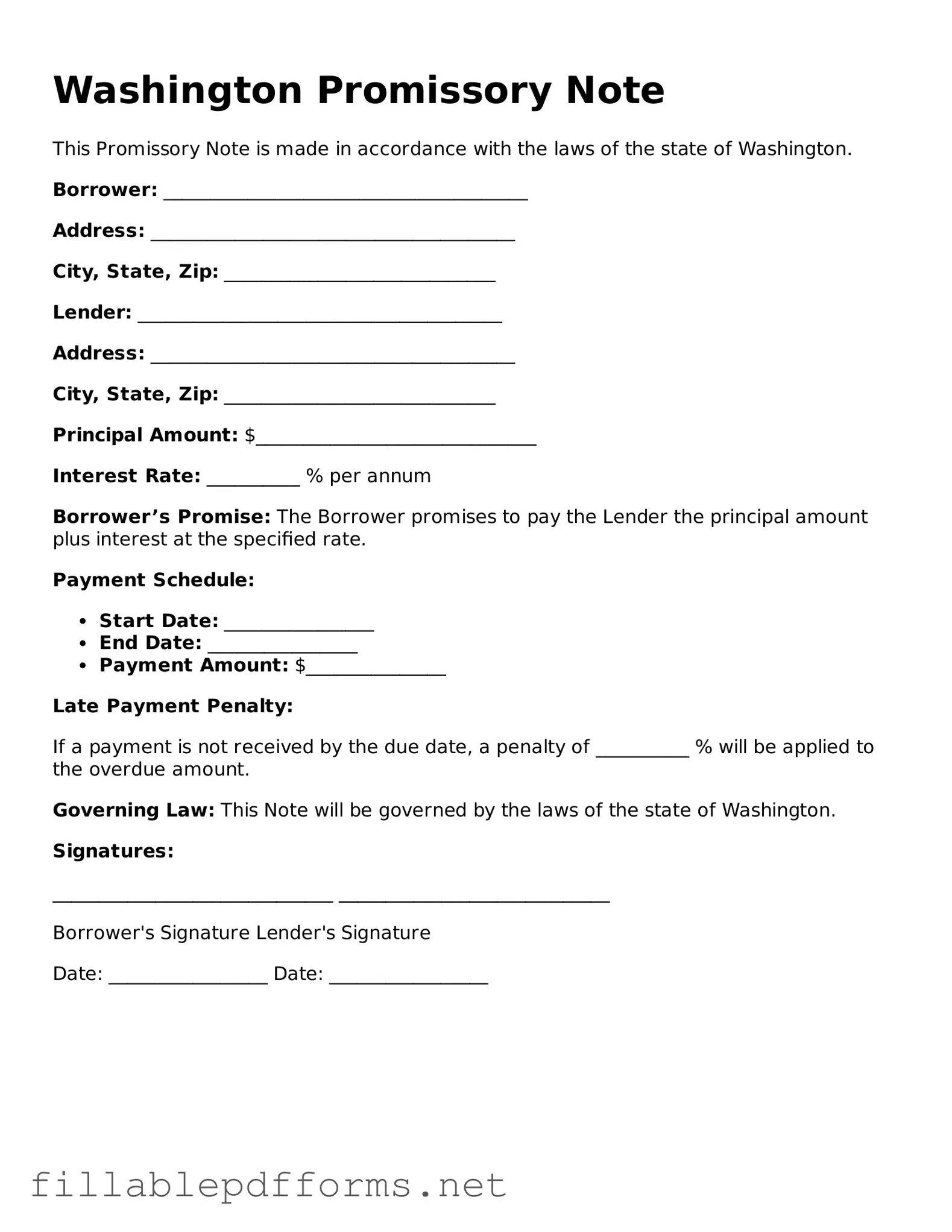Attorney-Verified Promissory Note Form for Washington State
A Washington Promissory Note is a legal document that outlines a borrower's promise to repay a specified amount of money to a lender under agreed-upon terms. This form serves as a vital tool for both parties, ensuring clarity and protection in the lending process. Understanding its components and implications is essential for anyone involved in a financial transaction in Washington.
Launch Editor Here
